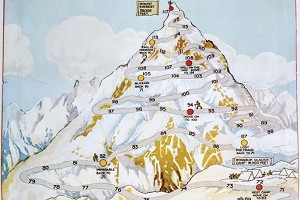
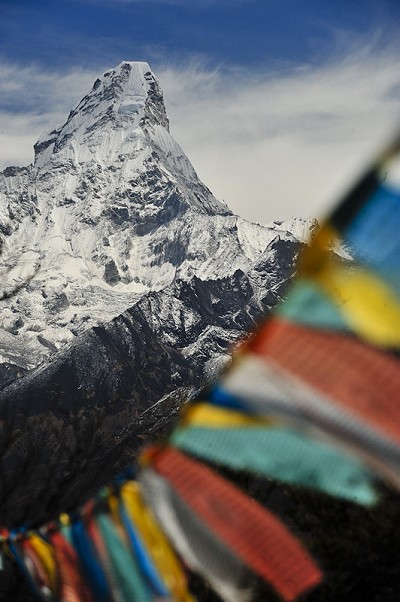
It sounded straightforward. Put one foot in front of another, repeat for six hours. Replenish with copious amounts of black tea and restless sleep, repeat for eight days. Get to Everest, take photo, turn around and scoot back down, making up for every beer that you denied yourself on the way up.
But at five thousand metres, putting one foot in front of the other suddenly didn't seem quite as simple – nor did drinking tea or lying down. In fact, all I seemed capable of doing was throwing up whilst losing my balance. And, as the rest of the trekking party powered up the dusty moraine, I reluctantly admitted that getting to the bottom of the top of the world was getting the better of me.
The Everest Base Camp trek is one of the world's classic treks. There are several variations but trekkers usually start from the high mountain airstrip of Lukla, taking 11 days to wind up the Khumbu valley to Everest Base Camp and the nearby rocky peak of Kala Patthar, before turning tail and heading south for thick air and cold beers.
There are three ways of tackling it: on your own, signing up with a local outfit or booking it from the UK. But no matter how you get yourself to the start of the trail, there's only one way you're going to get to the other end: under your own steam. Make no mistake, reaching Everest Base Camp might star in all the 'before-you-die' lists, but the continual walking, cold temperatures, basic accommodation and thinning air can easily stop you dead in your tracks. However, despite a rating of 'strenuous', it's still the most popular trek in the Himalaya, if not the world.
We were a crack team of eleven. Our motivations for tackling Everest Base Camp were mixed, but Rob, a Birmingham banker, summed up the majority view: "Everest is the Big One and I wanted to go and see it – I'm not getting any younger." His colleague Tony took a more pragmatic slant: "Rob booked it and I'd never hear the last of it if I didn't turn up."
Whilst Everest is the hook, the 11 days aren't just about this attention-seeking superstar, you also get an ever-changing backdrop of supporting cast, including Manaslu, Cho Oyu, Pumori and the dashing Ama Dablam. And, whilst it might be an over-exposed landscape, no coffee-table book will manage to convey the feeling of being there: the burning thighs, the gasping lungs, the smell of sweet black tea, the strange hallucinogenic dreams of altitude and the breathtaking sense of scale.
"...Whilst Everest is the hook, you also get an ever-changing backdrop of supporting cast, including Manaslu, Cho Oyu, Pumori and the dashing Ama Dablam..."
Us Brits were joined by a multitude of others out on the trail: dreadlocked students; strictly-gaitered Germans; sturdy Sherpas, bent double under improbable loads; box-fresh Americans; bad-tempered yaks, laden with blue expedition barrels; far-out families; be-logoed seven-summiteers, shepherded by hollow-cheeked mountain guides; the occasional pair of climbers, marked out by bad tights, a determined stomp and twin axes; overweight mid-life-crisisers looking set to pop; an entire cricket team – complete with wickets. And everyone buzzing with excitement, all here for one reason: the Big E.
There's one main way up to the Nepalese side of Everest, and this is it; out here you can forget about roads, cable cars or trains. Every single item in the Khumbu – from the cornerstones of Western trekking (bottled water, Coke, Snickers, Pringles and toilet paper) to the bed you sleep on has to come up this two-metre wide dirt track, on the back of man or beast.
Everyone, and everything, starts out in Lukla, and we were no exception. The airport here is a slab of tarmac slowly falling off the cliff edge. It's got a reputation. Planes take off literally down the runway, sliding out of sight and off the cliff, relying on morning updraft to give them a boost in the thin air. There's no such help barrelling out of the sky, fully laden out of Kathmandu – as terror firma looms you can only cross your fingers, or yourself.
Hearts in mouth, we bumped to a halt. The doors of our tiny aircraft were thrown open, and the warm, diesel-scented fug we'd carried up from Kathmandu drained out, replaced with cool mountain air. We clumsily disembarked, blinking in the clear light. Our adventure had started. The next week would see us to Phakding (2,610m), the Sherpa capital of Namche Bazaar (3,440m), the monastery of Tengboche (3,860m), the outpost of Dingboche (4,410m) and the desolate Lobuche (4,940m) before striking for Everest Base Camp at 5,364m. After Base Camp we'd head back to Gorak Shep (5,140m) before having a crack at Kala Patthar, weighing in at 5,550m.
"...'Jam Jam,' exclaimed our guide, which appeared to translate as: 'Enough looking at the view, let's walk'...
Finding our pace up Lukla's dirt-packed high street, there was a sudden lull in conversation. Everyone was silently taking stock: were these boots broken in? Was twice-a-week at the gym enough? What the hell was going on with this trekking pole? "Jam Jam," exclaimed our guide, which appeared to translate as: "Enough looking at the view, let's walk." But that was hard – this is a land with a lot of view. From Lukla we snaked up the course of the Dudh Kosi River, via a night at Phakding and into the Sagarmatha National Park – gradually climbing through rhododendron forest to reach the high Sherpa citadel of Namche Bazaar. Namche could be straight out of Lord of the Rings – bright buildings cling to the side of a mountain, centered on a large white Buddhist temple – and it's all about shopping (provisions for those on the up, souvenirs for those heading down), a first view of Everest and a last hot shower.
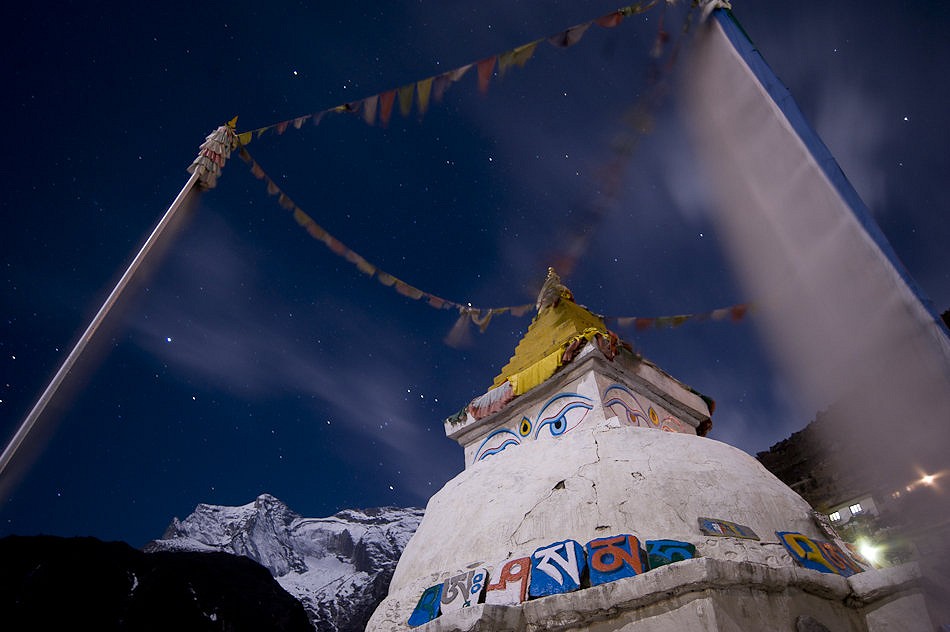
After an acclimatisation day we found ourselves on the move again, zigzagging through more forest to reach Tengboche monastery. If Namche was Lord of the Rings then this was Tomb Raider. When we rolled up, the sky was storm-dark; young monks in sleeveless, blood-red robes skidded around on freshly fallen snow as we retreated, shivering, into the wooden lodge for dhal bat and vivid dreams.
The next day brought an incredible sight: the snow was still on the ground, but the storm had passed, replaced by clear, blue sky and a perfect view of Everest. We made quick progress, sliding down the track, pointing at the Big One and dodging volleys of snowballs from our good doctor. As the day warmed, the snow faded, to be replaced with the looming presence of Ama Dablam. The trail would take us directly beneath its western flanks, to Dingboche – a town on the very edge of existence.
"...Later, admiring the moon rise over Ama Dablam, the cold, clear night drove us inside to seek sanctuary beside the lodge's yak-dung burning stove..."
Later, admiring the moon rise over Ama Dablam, the cold, clear night drove us inside to seek sanctuary beside the lodge's yak-dung burning stove. Battened down for the night, the lodge felt more like a moon colony than a tea house, with one-metre thick granite walls, narrow corridors and dim solar-powered lighting. Woollen Nepali hats had sprouted on the heads of most team members and Sigg bottles had finally come into their own as makeshift hot water bottles. After a second acclimatisation day we left our little moon base, weaving uphill before breaking out onto a high plateau and passing through the field of memorials to those who have never returned from Everest. There are a lot of monuments. Above us lay Lobuche – at nearly five thousand meters it was our final night's stop before Base Camp.
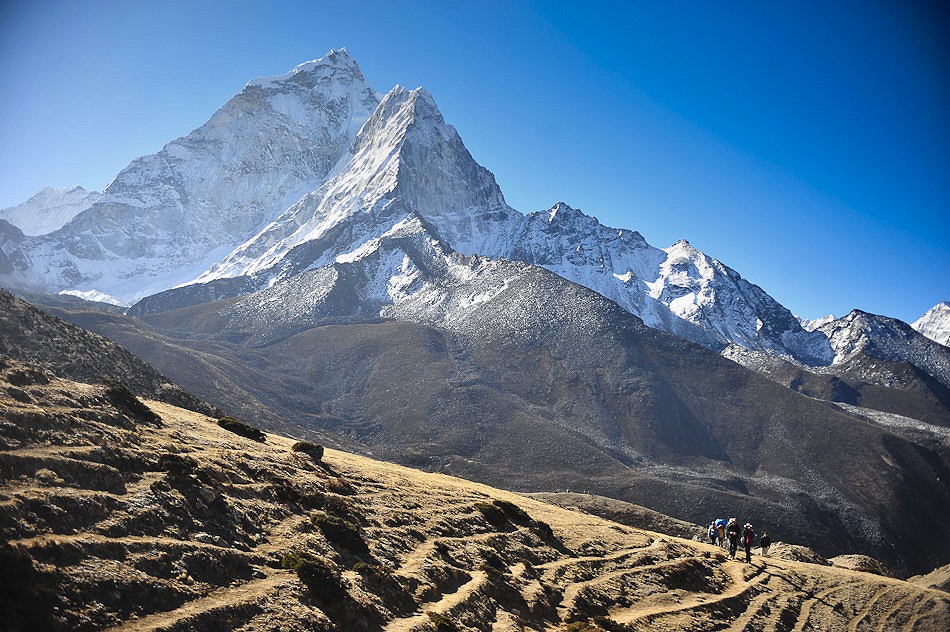
Altitude is an intriguing leveller: it's better to be more Chris Moyles than Olympic machine. So I'd imagined that I'd be fine. Yet, the next morning, minutes after leaving the lodge, my head felt like it was in a vice, my legs had turned to lead and my stomach was doing flip flops. As the team looked back in mild sympathy, our resident Doctor trotted up alongside me with unfair ease, sparked up a Malboro Light and murmured in my ear: "Aspirin, anti-emetic, Diamox?" Near the top of the world, things get back to front: not smoking bad, drugs good.
With chemical assistance, some encouraging "Jam Jams" and people repeatedly pulling me to my feet, the game looked back on. This was the toughest day of our trek – from Loboche we'd walk up the Khumbu Glacier to Everest Base Camp at 5,364m, before returning to Gorak Shep (5,147m). On paper it'd didn't look far (Base Camp is only six kilometres from Lobuche) but at ground level things were rather different and, as the sun rose higher in the sky, everyone's expressions became more fixed.
"...Altitude is an intriguing leveller: it's better to be more Chris Moyles than Olympic machine..."
Then, suddenly, we were there. The actual location of Everest Base Camp varies each year, so our end point was a cairn overlooking the glacier proper – which means you get a better view. And what a view. Here, the icy ridge of Pumori sweeps around to meet the West Ridge of Everest; beyond this impenetrable wall lies the Tibetan Plateau, in front, the jumbled chaos that is the Khumbu Ice Fall and the mysterious opening of the Western Cwm. It's one of the world's finest panoramas, all the sweeter because you have to earn it. We celebrated the only way that Brits know (with back-slapping and beer opening) as a group of seven-summiteers trudged past. They didn't share our elation – only trepidation showed in their eyes. Our adventure was nearly over but theirs had barely begun.
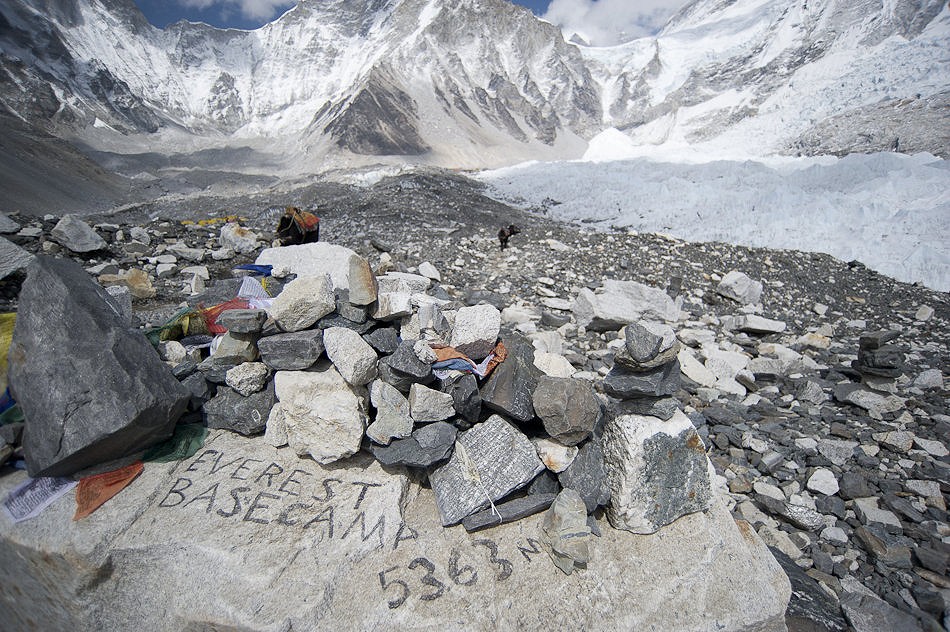
There was only one thing standing in-between us and a hot shower in Namche, and that was Kala Patthar, the rocky peak two kilometres back from Everest Base Camp, just above the lodge at Gorak Shep. A steep three-hour climb, it's a prized tick since it offers the one thing that Everest Base Camp cannot: a classic view of the actual summit of Everest. But, at two hundred metres higher than Base Camp itself, would we make it?
Early light saw a line of sleepy-eyed zombies silently file out of the hut, cross the dusty plateau and, heads bowed, start the plod up. The line quickly spread out – this was something you had to tackle at your own pace. Much steeper than the approach to Base Camp, the ascent boiled down to two choices: you could either slow to a crawl, trying to control your laboured breathing or let the ragged gasping build up until you had to sag onto your poles, pretending to admire the view. I choose a mixture of both, throwing in plenty of camera stops for good measure. The doctor, meanwhile, appeared to be jogging.
Whoever designed Kala Patthar had a mean streak – at this altitude the last thing you want is an endless succession of false horizons – but eventually the final summit eased into view. Another half hour of Diamox-assisted heavy breathing saw me to the summit prayer flags, the long-awaited classic view of Everest summit, and the unexpected smell of a Malboro Light.
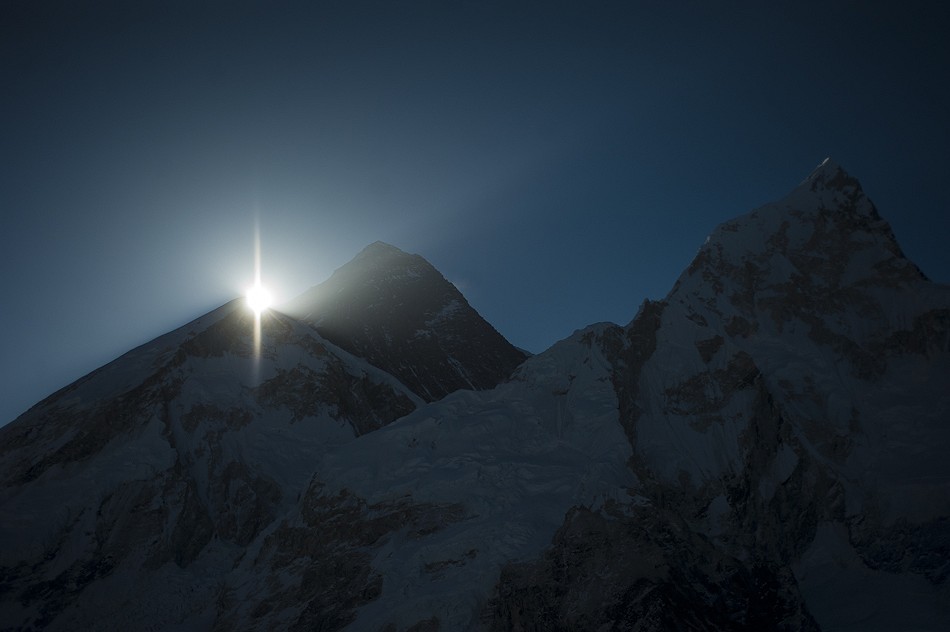
Over the next half an hour, the rest of the team staggered in, cheered on by those who'd already made it. It was a far cry from just over a week ago: a disparate gang of fresh-faced individuals had turned into a wild-eyed and sun-frazzled seasoned trekking team. We'd just reached one of the highpoints of our lives – and all before breakfast.
It was all downhill from there. Seven days later I was deposited at home, bearded and be-laden with handfuls of Kathmandu's best tat, the flags of Kala Patthar summit already a fading dream. But I'll be back. Everest captures the imagination like no other mountain on earth, and the Everest Base Camp trek is like no other walk you'll ever experience. It's a privilege to be up there – just don't forget the Diamox. And maybe take up smoking too.
About Alex Messenger
Alex Messenger is the Editor of Summit Magazine and, as you can see, a very talented photographer. His website is: www.alexmessenger.co.uk.
Alex travelled with the Adventure Company. Founded in 1996, The Adventure Company operates over 200 small group trips across all continents combining 'must-see' highlights with unforgettable cultural experiences. See www.adventurecompany.co.uk for more information.
This article first appeared in Summit magazine.

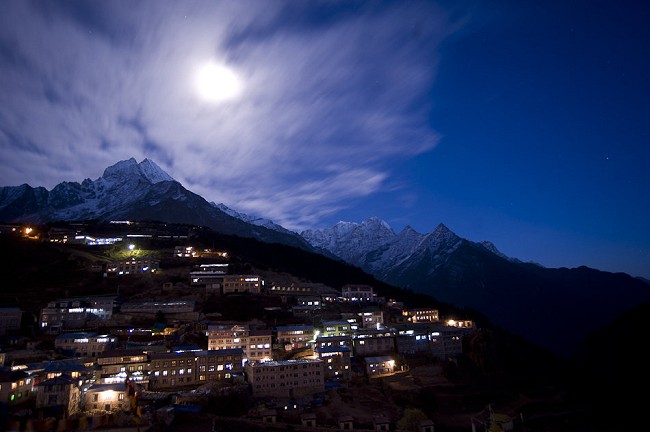

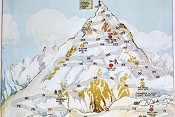

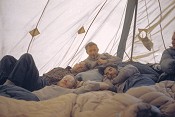
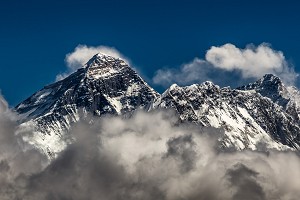
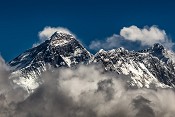




Comments